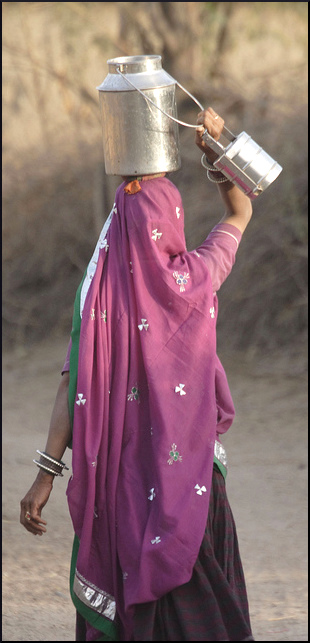
When conditions of deprivation in third-world countries are discussed, one familiar trope is the procession of women carrying vessels on their heads, who walk miles every day just to get some water. And yet, in most of the world’s allegedly advanced metropolitan capitals, people can’t get water.
The May edition of the House the Homeless newsletter foretold the coming of the hot season, and now North America is in the thick of it. Well over half a million Americans experience homelessness on any given night or — more to the point in summertime — on any given day. The newsletter included a note from HtH Content Director Steve O’Keefe reminding us that in some places, animal cruelty statutes are more protective of non-human species than they are of human beings. The Humane Society says,
Animal neglect situations are those in which the animal’s caretaker or owner fails to provide food, water, shelter, or veterinary care sufficient for survival…. Many states have a provision specifically addressing animal neglect written into their animal cruelty laws…
And yet the United States contains millions of people who don’t have enough food, water, shelter or medical care to survive. Humans suffer and die every day from the lack of those things. When law enforcement officials encounter neglected and abused animals, the surrounding humans are held responsible and blamed. When law enforcement officers encounter neglected and abused humans, they themselves are blamed, and often end up in even worse circumstances and with criminal records.
For an example of extreme protest against this reality, see an essay written by Cheryl Jones, founder of the American Homeless Families Foundation, titled “US Government Treats Our Wounded Homeless Veterans Worse Than Animals!”
The science
The human body is 60% water; the brain is between 70% and 80% water, depending on who answers the question. Water has several exit routes from the body, and needs to be constantly replaced. Medical authorities recommend drinking a liter or two every day. Most people don’t drink enough of it even when they have the opportunity.
Sufficient advice is available on how to avoid heat-related death, but people are not always in a position to follow good advice. While the happily housed and cheerfully oblivious are urged to stimulate their desire for water by brewing exotic unsweetened teas, or adding costly little flasks of natural flavor, unhoused people don’t need to whet their appetite for water. The thirst and the genuine medical need are present. Too often, the water is not.
Exposure-related problems include heat exhaustion and heat stroke. Some “rough sleepers” stay awake and alert at night for safety reasons, but fall asleep in open areas during the day, and add sunburn to their list of ailments. Overexposure to the sun is a well-known cause of cancer.
Dehydration and health destruction
Ongoing dehydration has scary and expensive health consequences, including digestive and metabolic problems, blood clots, seizures, urinary tract infections, kidney stones, immune deficiency, high blood pressure, joint pain, susceptibility to asthma and allergies, and bad breath.
In the short term, it affects mood and cognition. Alertness, concentration, and short-term memory can be disrupted. Dehydration can cause confusion and fogginess, inability to mentally focus, muscle cramps, weakness, chills and fever, headache, depression, and fatigue.
Here is an important and compassionate thing to remember: When a person is forced to survive in public, she or he might appear to be drunk or drugged, when the real problem severe and chronic dehydration.
What is the answer? The charitable giving of bottled water must have its limits. Citizens already scream about the amount of trash that accumulates in homeless camps. Every disposable container contributes toward the death of the oceans. Handing out plastic bottles is far from the best answer. People need containers they can hang on to, and sources to fill those containers.
Drinking water needs to be available to the public at all times and in many locations. It matters not what architectural landmarks a city boasts, or how many operas and ballets it supports. If the people don’t have access to water, the single most necessary element of life, the place can’t really be considered fit for human habitation.
Many countries share the shame
In Great Britain, which supposedly has been civilized for centuries, there was a commotion just last month in the city of Birmingham. A group of volunteers distributed water which, reportedly, the recipients literally fought over. A detail that adds insult to injury is that Birmingham had numerous public fountains in the past.
Many cities, behaving disgracefully, have shut down public water sources. The journalists who compiled this story quoted a woman named Sarah:
If I go into a shop or cafe and try and ask for a glass of water, they always say no. If people think you’re homeless, they just won’t help you. If someone who didn’t look homeless went in and asked for water, they’d get it. It’s so frustrating.
Security guards are always on the look-out for you. They think you’re scum. They’ll make sure you’re not in their place for too long, or just boot you out straight away so it’s hard to find shade for a long time. Even in parks and that there’s always someone to tell you to move on.
Suppose that, by some incredible stroke of luck, an unhoused person has access to a dependable source of clean drinking water, enough to drink a health-compatible amount. And what if there is no nearby location where it is legal to perform nature’s other functions? Cosmic jokes to play on people experiencing homelessness — the Universe never runs out of them.
Reactions?
Source: “The Dangers of Chronic Dehydration,” NuuvoHealth.com, 08/11/17
Source: “Heatwave leaves homeless ‘fighting’ over water,” BBC.com. 06/29/18
Source: “Animal Neglect,” humanesociety.org
Source: “US Government Treats Our Wounded Homeless Veterans Worse Than Animals!,” linkedin.com, 10/05/14
Photo credit: International Livestock Research Institute on Visualhunt/CC BY-SA


